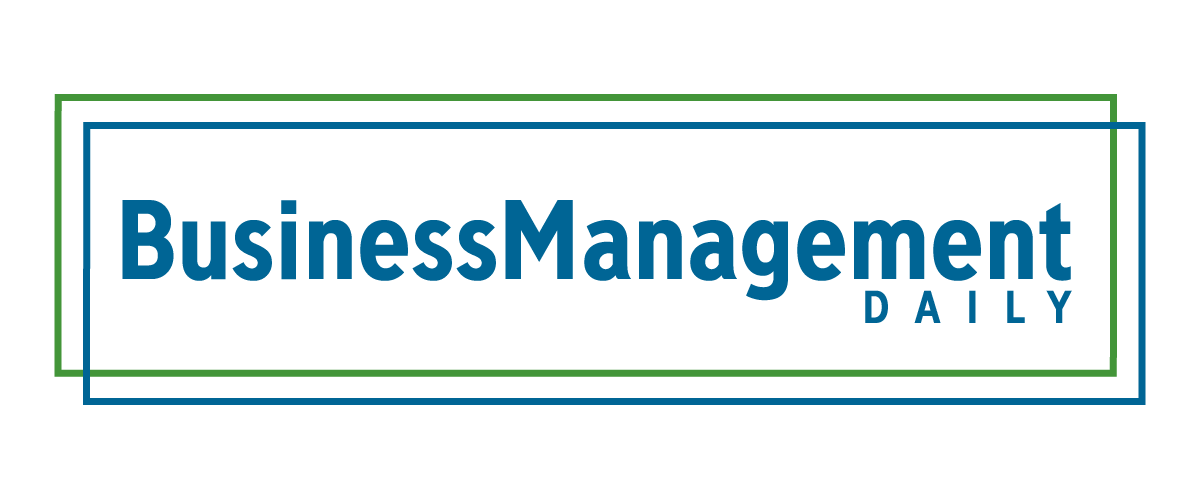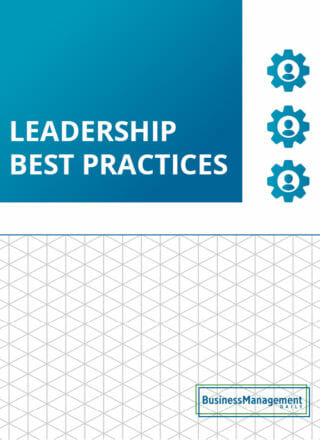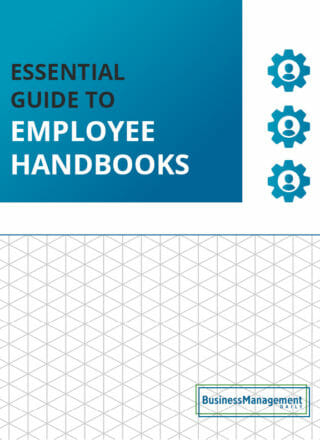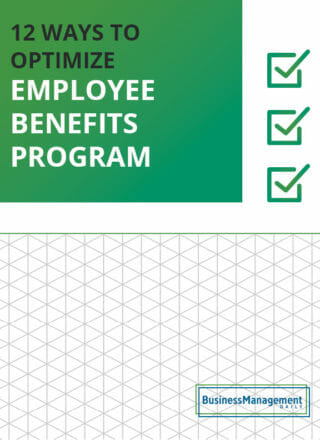What is employee relations? Beyond the basics of HR
Employee relations vs. HR: What’s the difference?
Employee relations is a buzzword often used in human resources and people management discussions, but do you honestly know what it means? Many people confuse employee relations with general HR, but they’re a bit different.
We’ve compiled everything you need to know about employee relations below so that you can dive into what exactly it means, what tasks fall under the term’s umbrella, and why it matters. We’ll also share some strategies to help you create or improve your business’ employee relations strategy.
What is employee relations?
Employee relations involve building and developing relationships between employers and employees. Think of employee relations as the more interpersonal or relational side of people management. Employee relations are a function of human resources.
Typically, it involves a partnership between the human resources department and the company’s people leaders. Together, they work to create strong relationships and strive to provide a positive employee experience.
On a broader level, employee relations also involve building the company’s culture to create community and a sense of belonging for the employee population.
After all, your company culture is based on how people within the organization communicate with one another, their shared values
Vertical vs. horizontal employee relations
Sometimes, employee relations are divided into two categories: vertical and horizontal. Vertical employee relations focus on the relationship between the employee and leadership. This includes their direct supervisor and other managers that they may work with or report to, including executive leadership.
Vertical employee relations efforts typically focus on specific activities. These activities promote trust and mutual respect between staff members and higher-ups.
This may include your company’s leadership communication strategy. Consider how leaders share information and keep employees informed about changes or updates.
Another example is facilitating regular performance management check-ins between supervisors and direct reports. This form of employee relations receives the most focus within organizations.
On the other hand, horizontal employee relations focus on managing relationships between employees at the same level. This involves team-building activities and encouraging collaboration. It also includes settling disputes among coworkers.
Horizontal employee relations are important to nurture in today’s business world. Many remote and hybrid employees have fewer opportunities to build peer relationships. These relationships should be meaningful and collaborative.
Therefore, team leaders must be more proactive. They need to create opportunities for these relationships to develop.
Human resources vs. Employee relations
Human resources and employee relations are both essential components of people management. However, the terms refer to slightly different things, even if they may overlap.
The Society of Human Resources Management (SHRM) succinctly defines human resource management as “the process of managing an organization’s employees.” It encompasses people management functions throughout the employee lifecycle.
As you can imagine, most employee relations tasks and strategies fall under that definition of human resources management. However, not all HR activities are necessarily part of employee relations.
For example, employee onboarding is where the employer-employee relationship starts to blossom. It’s a key opportunity to start on the right foot with new employees by offering proper support and creating a good relationship.
Employee relations involve building that initial rapport and creating a welcoming environment. However, broader administrative onboarding tasks like entering the employee’s information into your payroll system would typically fall under the umbrella of human resources but not employee relations.
Common examples of employee relations activities
The following activities are typically classified as employee relations responsibilities or functions:
-
Facilitating workplace safety programs. Employee health and safety initiatives can be part of employee relations. After all, safe working conditions are essential for maintaining a positive work environment.
Workplace safety training and initiatives also allow employers to show employees that they care about their well-being. When approaching safety measures, take the extra time to emphasize why these guidelines matter and that the goal is to protect the employees. -
Handling workplace conflicts. Conflict resolution in the workplace can be challenging. However, when handled well, it is a great way to strengthen employer-employee relationships and improve peer relationships.
It is essential for both parties to feel heard and respected. At the same time, you can help them work toward a solution. This allows employee relations professionals to strengthen relationships with both parties. Hopefully, it can also repair the peer relationship. -
Addressing harassment or discrimination complaints. Some conflicts can’t be addressed through collaborative problem-solving and require a thorough workplace investigation to uncover potential harassment or discrimination.
Part of maintaining good employee relations is creating a safe, respectful workplace culture and promptly addressing serious misconduct, such as harassment. -
Implementing employee engagement strategies. Engagement and employee relations go hand in hand, as employees tend to be most engaged when they have good working relationships with their managers and teams.
Things like improving employee recognition, addressing feedback from engagement surveys, and facilitating better team bonding can engage employees while boosting employee relations. -
Explaining company policies. Employee handbooks can be large and complex documents, which can understandably cause confusion from time to time. Therefore, employee relations team members, including HR professionals or managers, should take time to help.
They should walk employees through any policies about which employees have questions. This ensures that everyone understands. In particular, the employee understands what is expected of them.
Ultimately, this helps prevent misunderstandings. These misunderstandings can cause employer-employee conflict or frustration. -
Facilitating professional development. Employers and employees can build positive, productive relationships by working together to explore career development or skill-building opportunities for the employee.
This shows the employee that you are invested in their growth and care about their goals. It’s also a great way to encourage internal growth and enhance employee productivity.
Why is employee relations important?
Positive employee relations offer benefits for the organization and its employees. Explore a few of the largest benefits to see why it’s worth investing in building good employee relations within your business.
Reducing employee turnover and improving retention rates
One of the main motivators for employers to focus on building good employee relations is that it can improve employee retention. We all know the saying, “An employee doesn’t quit their job; they quit their manager,” and that’s often the truth. Managers and team leaders who fail to build positive relationships with their direct reports will likely have higher turnover rates.
Horizontal employee relations can also improve retention. A Gallup study found that employees who say that they have a best friend at work have higher rates of employee satisfaction and are less likely to be passively or actively hunting for a new role outside their current company.
Facilitating strong bonds between peers at work can help your team better manage stressful periods, such as busy seasons or periods of transition, and can improve engagement and collaboration.
Creating strong brand advocates
You might be familiar with net promoter scores (NPS) or employee net promoter scores (eNPS) if you have managed or taken employee engagement surveys. These questions ask employees if they would recommend your company to others.
This recommendation could be for an employer or the company’s products or services. Generally, employees with good relationships with their supervisors, peers, and employers have a positive company outlook.
As a result, they answer “yes” to these questions.
You want most employees to answer yes or strongly agree to the eNPS, as this indicates a higher level of employee loyalty and that they are more likely to act as brand advocates.
Brand advocates will recommend open roles to peers and speak positively about the employer and their products to others.
Facilitating better employee well-being
Building strong relationships with workers can help managers prioritize and better address employee well-being. Burnout is a major problem in many work environments and can be approached as an employee relations issue.
When developing and growing the employer-employee relationship, it’s important to emphasize that you care about your employees’ well-being and focus on building an open and trusting relationship with them.
In this type of relationship, employees feel comfortable talking to their manager about various issues, such as increased work stress or burnout.
Additionally, they might feel comfortable discussing personal factors that may impact their well-being and work performance.
When employees openly discuss these issues, leaders and HR departments can more easily take action to assist them. For instance, this might involve adjusting workloads to decrease the risk of burnout.
Alternatively, it could include educating employees about available benefits and connecting them with an employee assistance plan. Additionally, they might develop strategies to reduce work stress
How the improve employee relations
If you want to upgrade your employee relations strategy, here are some activities to consider.
Take a close look at your management communication strategy
Your communication strategy and approach will have a huge impact on employee relations. Employees often become frustrated with their employer if they feel that leadership communication is too infrequent or poorly delivered.
Open communication through regular updates and check-ins can help employees feel respected and involved within the company.
Consider the interactions between employees and their direct reports more closely. For example, how often are one-on-one check-ins happening? Do employees feel comfortable communicating concerns or asking questions to their managers?
Furthermore, think about employee relations on a larger scale. A communication strategy should guide how high-level leaders share major company news. This strategy should also include how often executives directly address all employees.
Your CEO probably doesn’t have time to build strong relationships with each individual. However, meeting all employees weekly or monthly can still improve employee relations.
Look for ways to support and emphasize company values
Employees today care about their employer’s values and want to see leadership properly demonstrate and act on those values. Your company values shouldn’t just be a list of words that you create and post on your website or trout out during big meetings.
Instead, they should be intertwined with your company culture, employee relations policies, and overall operations.
Shared values can be a great way to bond with others. Therefore, your company values can be an asset when approaching both vertical and horizontal employee relations. As a leader, ask yourself how you can better model the values.
Also, consider how you can incorporate them into other employee relations initiatives. For example, you might include them in team bonding activities.
Approach performance management through the lens of employee relations
Suppose your performance management strategy consists of annual performance reviews and only discussing employee performance when a problem arises. In that case, you’re not leveraging this area of HR as an effective strategy.
Providing regular feedback is an excellent way for managers to strengthen their relationships with employees. Be sure to acknowledge and recognize good performance throughout the year rather than waiting for the annual performance appraisal.
Performance check-ins are also a great opportunity to discuss the employee’s goals. Understanding an employee’s professional goals and interests can help managers build more meaningful relationships with employees.
Employees who feel that their employers invest in their growth tend to have higher employee satisfaction scores. Additionally, they have lower turnover rates when employers provide meaningful development resources or opportunities.
More resources:
How to hone managerial ethics in employee relations ![]()
Employee relations examples and strategies for handling them ![]()
Employee rights calling in sick: What you must know ![]()






